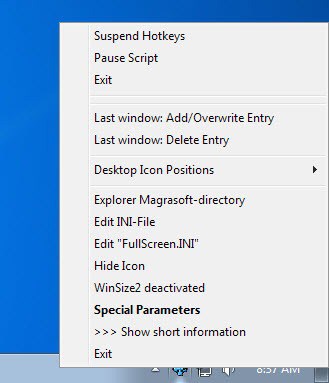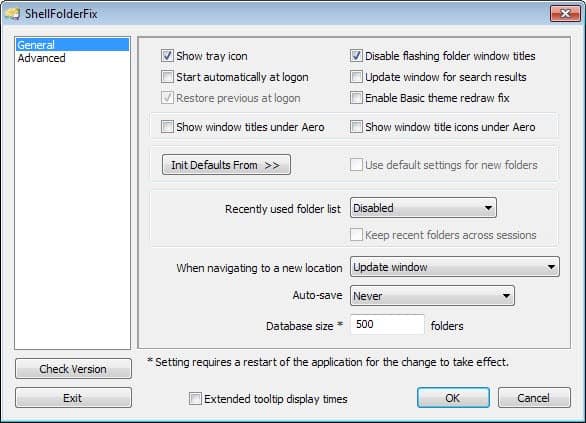Making sense of how windows are opened on Windows

One of the things that has been annoying me for a long time -- ever since I started to use the first public beta versions of Windows 7 -- is how the operating system handles how windows are opened.
This is best observed when you launch multiple Windows Explorer instances on the system. I often do that to improve file operations, e.g. the transfer of files from one folder to the other by placing two windows next to each other.
You may have noticed that individual window positions are not remembered by the operating system.
Each window that is opened has a specific size and position on the desktop. When you open a new window, it will use the same size as the last window but a different position on the system.
If you resize the second window and open a third, the third window will have the size of the second window. Closing the first window and opening it again will display it in the same dimensions of the second window.
Why is that?
The main reason why this is happening is because there is only one global variable for Windows Explorer's size on the desktop. Only the last size by the last resize operation is remembered, and all windows use it regardless of how they were displayed on the desktop previously.
If you have used Vista or another pre-Windows 7 operating system, you may remember a preference that remembers individual folder sizes and positions. This feature appears to have been removed by Microsoft from Windows 7 and newer versions of Windows.
The consequence is that the operating system won't save individual window positions and sizes anymore.
Solution
There is no first-party solution, a setting in the Registry for instance, that you can modify to change the behavior of Windows in this regard.
The only viable option is to use third-party software that provides you with options to remember individual Window positions.
WinSize2 is a free open source program for Windows that you can use to remember every windows' size and position. All you have to do is run the winsize.exe application (had to run the update one first to create it), activate the window that you want to be remembered, and use Ctrl-Alt-Z to do so.
This saves that window's size and position. Whenever you open it again, it opens in the exact same location provided that WinSize2 is running in the background. It is interesting to note that it will change the size and position automatically if you switch to another location in Windows Explorer that you have saved size and position for.
The program offers lots of other features, for instance an option to save the desktop layout of the system.
ShellFolderFix has been designed for Windows Explorer exclusively. The program works right out of the box and remembers the last 500 folder positions and sizes. You can change that value and many other values in the program preferences.
The program is comfortable to use as window positions are automatically remembered, which means that you do not need to hit a shortcut key to do so.
While that is useful, it does not give you as much control as WinSize2 because of that. If there is a folder that you do not want saved, there is not an option to do so with this program.
The application ships with some additional features that you may find useful. It is for instance possible to save workspaces. If you do so, the layout of all open Windows Explorer windows is saved which you can open at a later point in time again. Handy if you work with the same set of folders and a distinct layout regularly.
Here is a video that highlights the issue again:


















I have been wondering about how Windows manages and handles windows position for years and I have not been able to find where this is stored.
I have seen frequently that if you have dual monitor setup and if you remove of the screen, Windows believes is still there and will sometimes send the window offscreen and it’s a pain to reposition the windows. There should be a way to reset all the windows position.
When the heck is Redmond EVER going to add tabs to Windows Explorer? I use QTTabbar in Win 7 to take care of multi-folder copy/paste situations. Then again, I use Teracopy for faster copy/pasting! LOL!
When Microsoft comes out with a new version of Windows, they may remove some features from the previous version. Sometimes they replace it with something else.
This looks like it will be very useful, spending time arranging window workspace and then having to do it all over again next session because setup hasn’t been remembered is annoying.
Btw if you only need multi windows of your browser arranged in a particular way, making a simple html start file with javascript to launch new windows using “window.open” command you can size and position them according to your screen dimensions.
Part of the whole dumbing down of Windows. It’s like FF. You need more and more third party apps to make it usable.